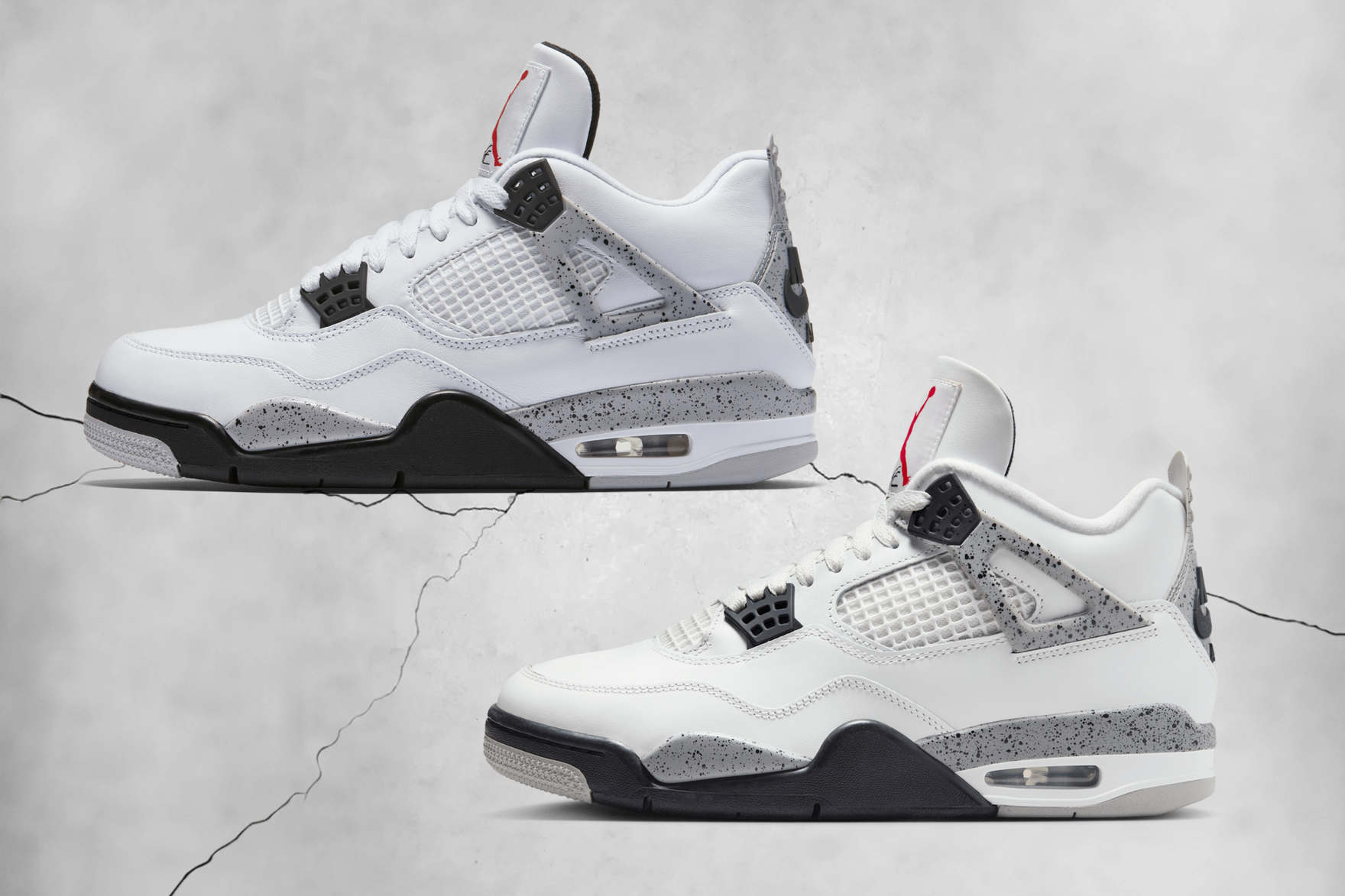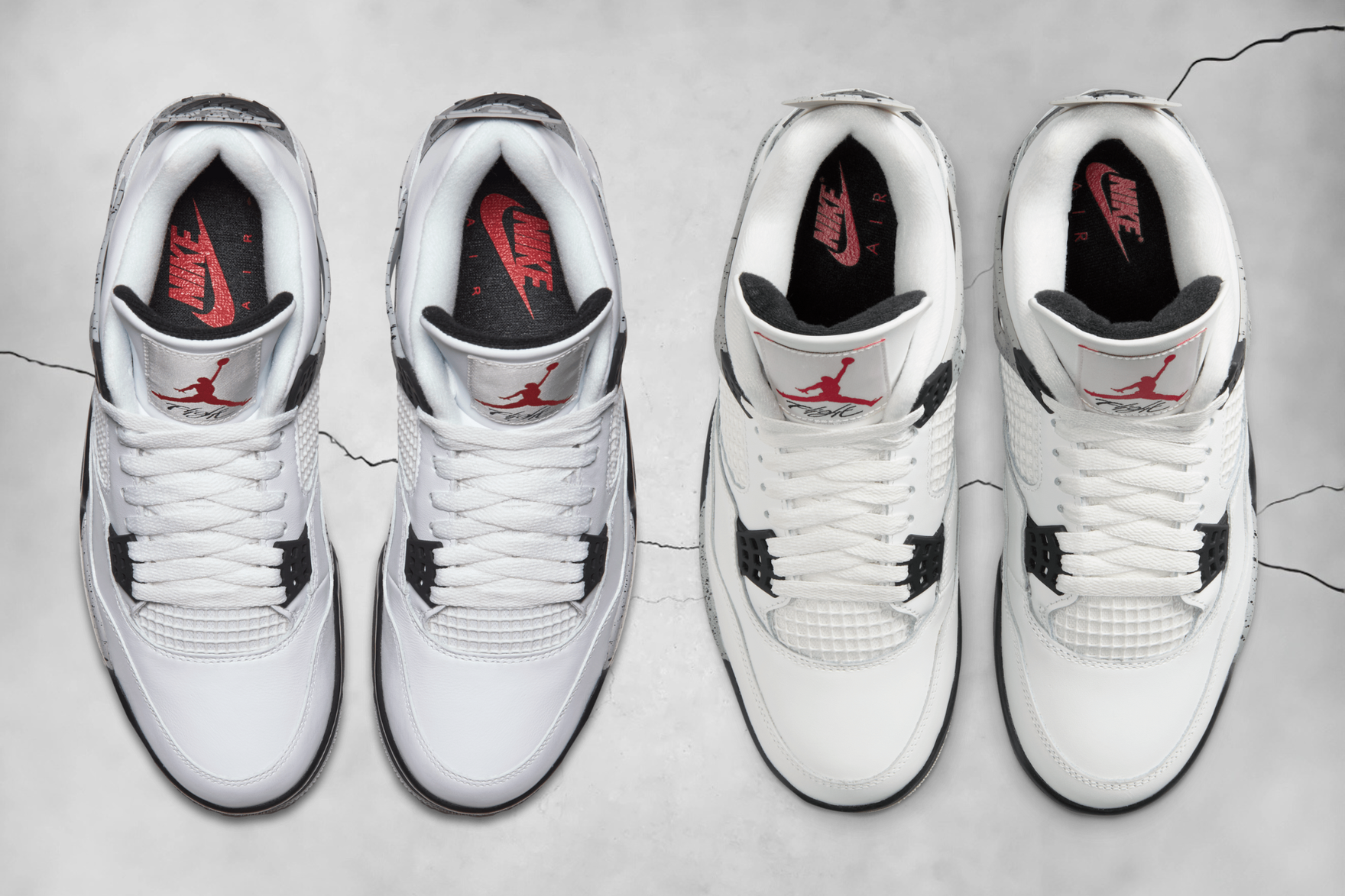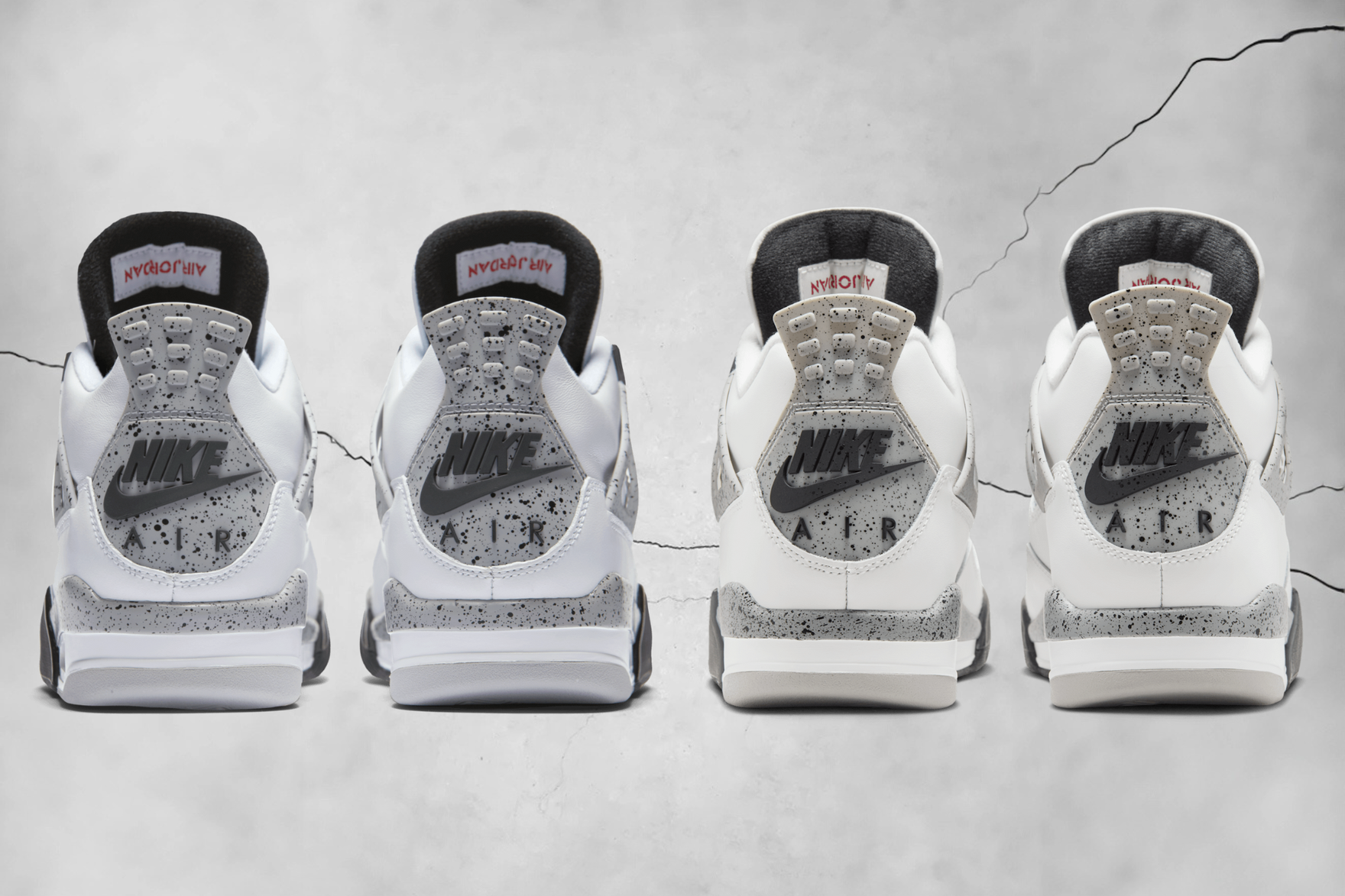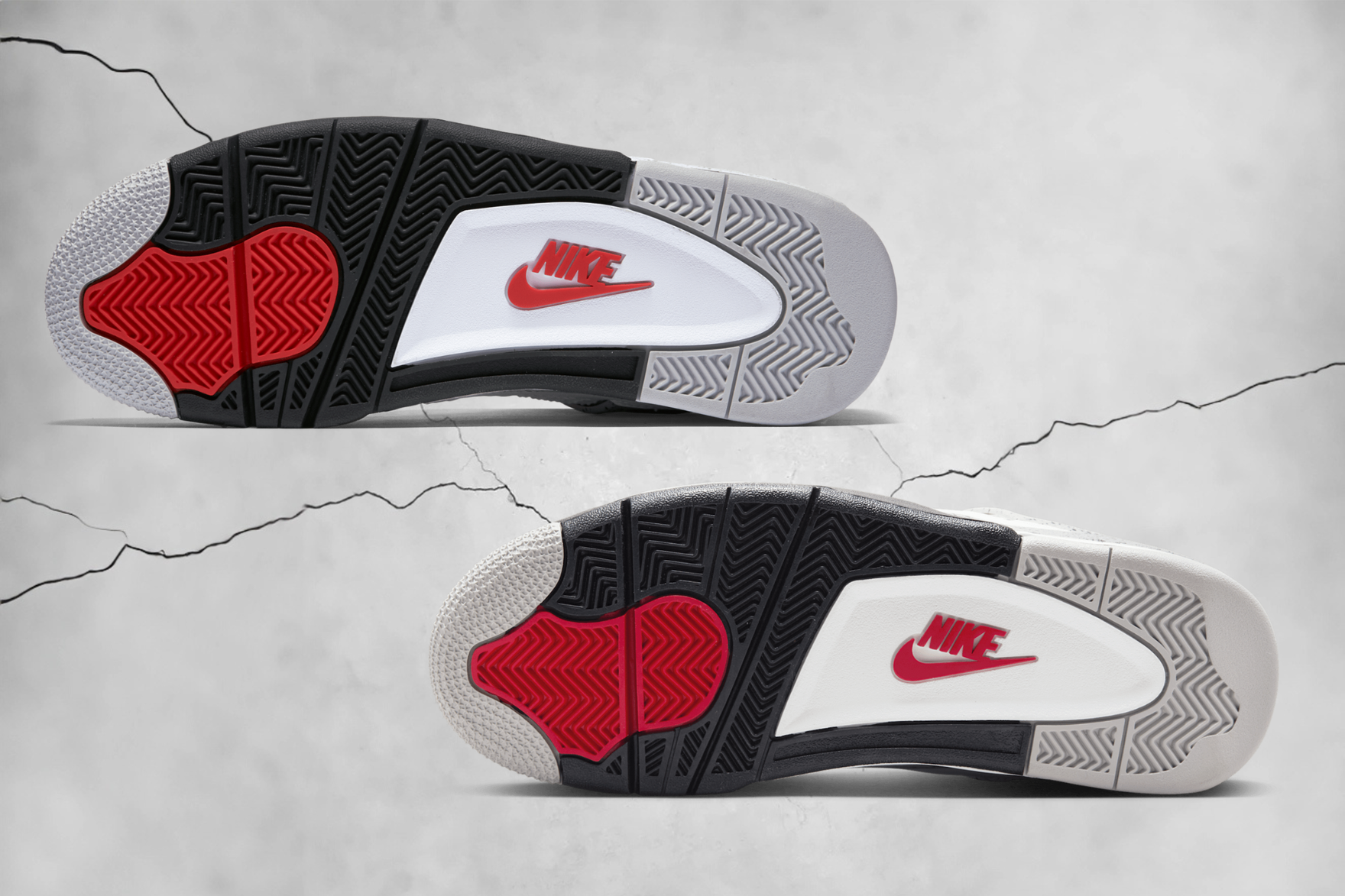Breaking Down the Differences: Air Jordan 4 ‘White Cement’ 2025 vs 2016
Few sneakers hold the massive cultural authority of the Air Jordan 4 ‘White Cement’. First laced up in 1989 and retroed several times over the decades, each re-release is met with forensic-level scrutiny. And with the 2025 edition crashing down like a concrete slab this week, comparisons to its predecessors are inevitable. So, how does the latest version stack up? From heel tabs to toe boxes, we’re breaking down every last detail between the 2016 and 2025 releases – because when it comes to ‘White Cement’, even the smallest crack matters.

A Cemented Legacy: A Brief History of the Air Jordan 4 'White Cement'
For many diehards, the Air Jordan 4 ‘White Cement’ isn’t just legendary – it’s the concrete foundation holding up the whole damn legacy. Originally released in 1989, the model was designed by and marked several firsts for the Jordan line. It introduced molded support ‘wings’, mesh paneling for breathability, and a more angular midsole. Notably, it was also the first Air Jordan to feature a herringbone traction pattern.
The original 1989 drop included four colourways, but the ‘White Cement’ stood out with its crisp white leather upper, speckled overlays, and subtle touches of ‘Fire Red’ on the tongue and outsole. It was a clean, distinct design that cut between street style and court performance.
The first retro arrived in 1999, closely mirroring the original – complete with Nike Air branding on the heel, making it a grail for collectors. Then came the 2012 retro, which disappointed purists by replacing the OG heel branding with the Jumpman logo and using a slightly different grey tone and shape.
In 2016, Jordan Brand finally delivered. That release brought back the Nike Air heel branding for the first time in the new millennium, and was part of the Remastered series – an initiative launched in 2015 to improve materials, craftsmanship, and retro accuracy.
Now, nearly a decade later, the 2025 edition returns with even more attention to detail.

Shape and Silhouette
The 2025 ‘White Cement’ touts a slightly higher profile than the 2016 retro – a subtle shift, but one that better replicates the 1989 original’s stance. Jordan Brand’s recent emphasis on recreating OG shapes has led to sleeker toe boxes, more sculpted collars, and tighter netting – and this release follows suit. Overall, the 2025 cut gets closer to the OG than we've seen in years. From the side profile to the forefoot proportions, the shape is cleaner, sharper, and more OG-authentic.

Leather and Build Quality
Material differences are instantly noticeable in-hand. The 2016 retro came with a softer, more pliable leather that gave it a slightly broken-in feel straight out of the box. The 2025 pair, by contrast, uses a firmer grain that feels more structured – and is reportedly more durable over time. It’s not the most premium leather Jordan Brand has ever rolled out, but it gets the job done – especially when paired with a proper polyurethane insole, which makes a welcome comeback this year. (Cue the standing ovation from the comfort-conscious.) Build-wise, the 2025 release feels more dialled in overall: panel edges are crisper, stitching is cleaner, and the finish is just that little bit sharper. Still, despite the structural upgrades, the leather does come off as a little – dare we say it? – cheap.

Cement Speckling and Netting
One of the biggest talking points of the 2025 release is the speckled ‘cement’ print. This time around, the detailing across the wings, mudguard, and heel tab is bolder and more textured – you can actually feel the grit. That tactile finish brings it closer to the OG 1989 pair, right down to the speckling that now extends across the 'Nike Air' branding itself – just like the original. (It’s a slick detail missing from both the 2016 and 2012 retros.) By comparison, the 2016 pair’s speckling felt much flatter – both to the eye and the touch.
Netting also sees a return to form. The 2016 version featured a chunkier net with wider gaps, while the 2025 pair opts for a tighter weave and thinner execution, once again nodding more faithfully to the original blueprint.

Tongue, Liner, and Extras
The tongue on the 2025 edition is notably thicker and more plush than its predecessor – another nod to the OG’s padded comfort. The ankle liner also feels slightly upgraded, with a softer interior fabric for better all-day wear. Both pairs feature the iconic Nike Air heel branding, but the 2025 version has the edge with a better-shaped heel tab and a more accurate grey tone. And yes – for the insole nerds – the 2025 comes fitted with a proper polyurethane footbed, replacing the thinner, less supportive foam from 2016.

The Verdict: This One Hits Hard
The Air Jordan 4 ‘White Cement’ 2025 isn’t a radical overhaul – but it is a meaningful refinement. With its improved shape, true polyurethane insole, and more accurate netting, it’s easily the most faithful retro we’ve seen yet. Sure, the leather leaves a little to be desired, but nearly every other detail is a slam dunk, capturing the essence of one of the greatest Jumpman releases in all its late-80s glory.
Whether you’re a purist chasing 1:1 accuracy or just after a fresh pair of Cements, this drop delivers. Call it what it is: a windmill slam from the Jumpman.
